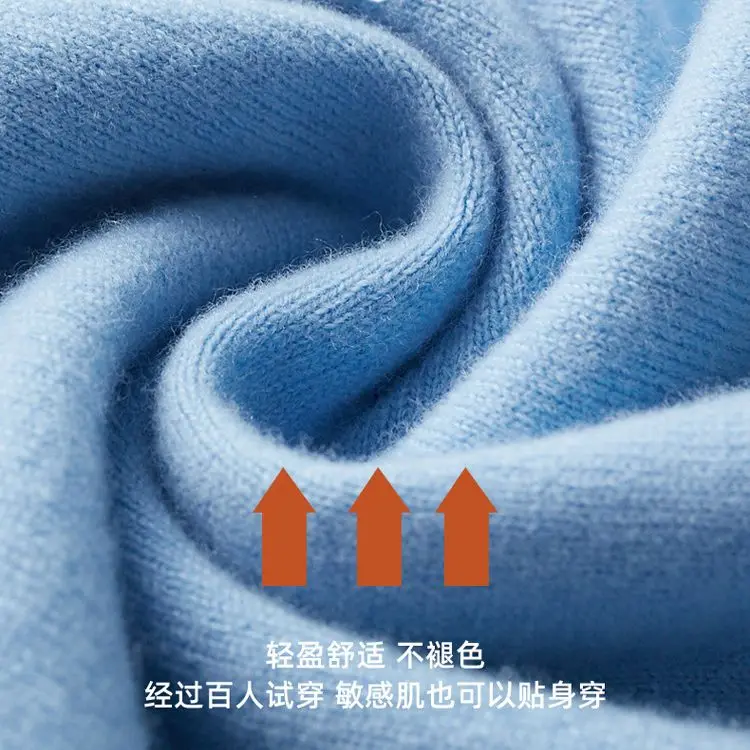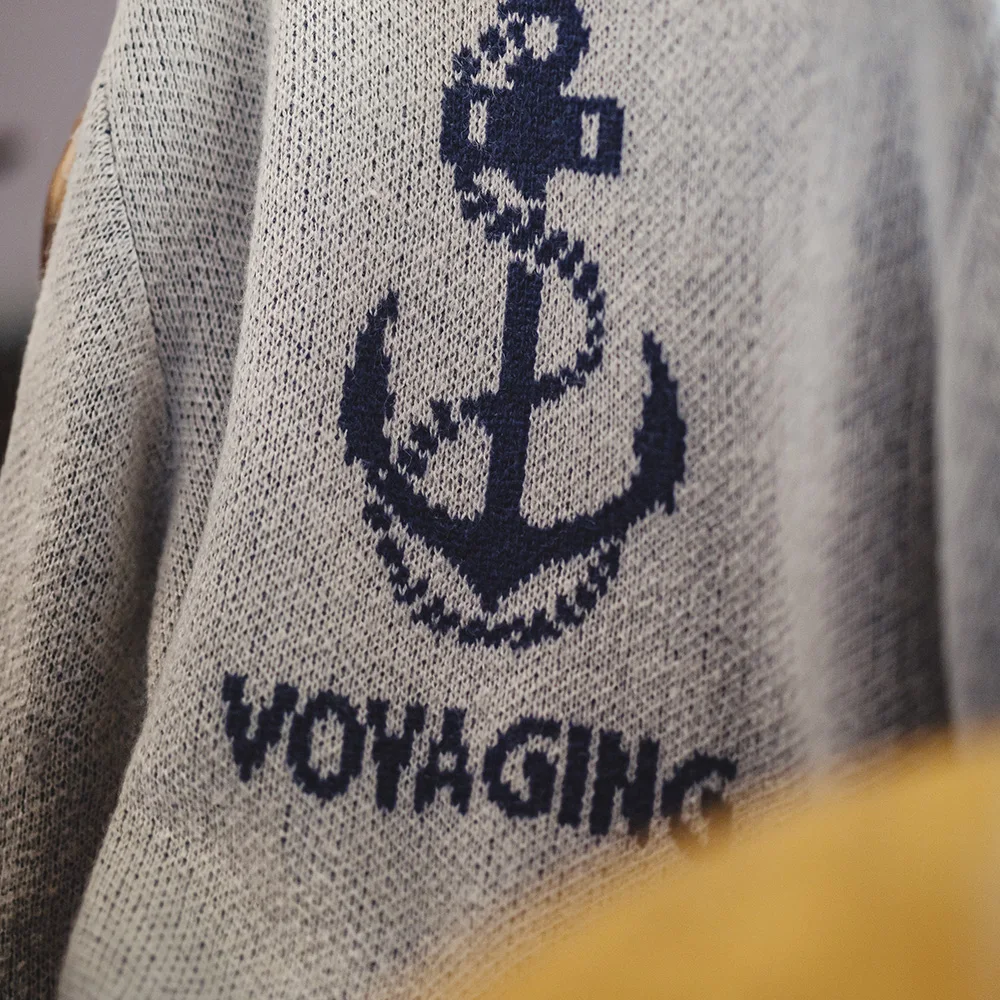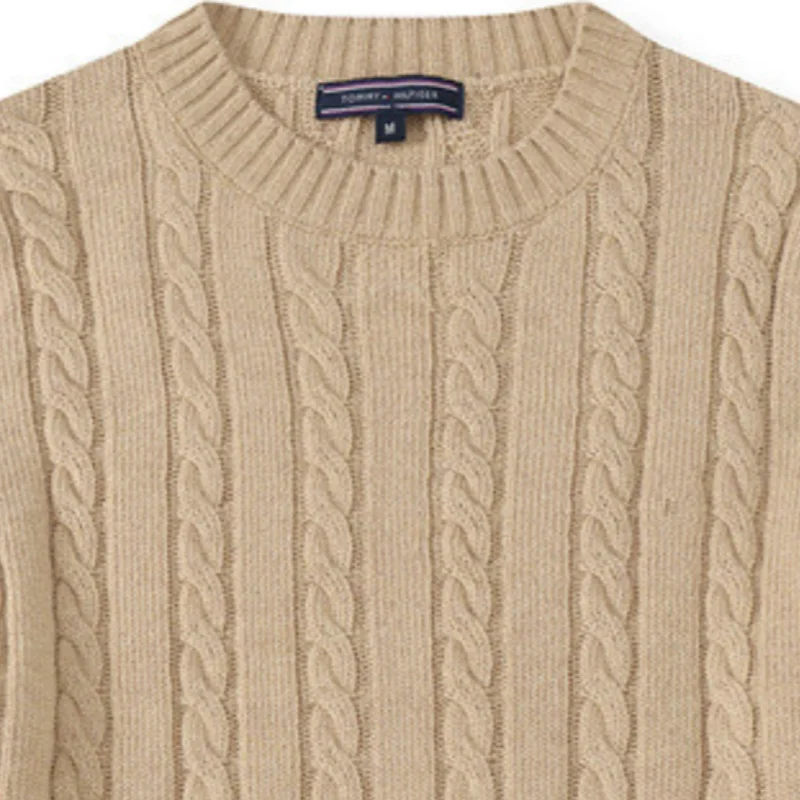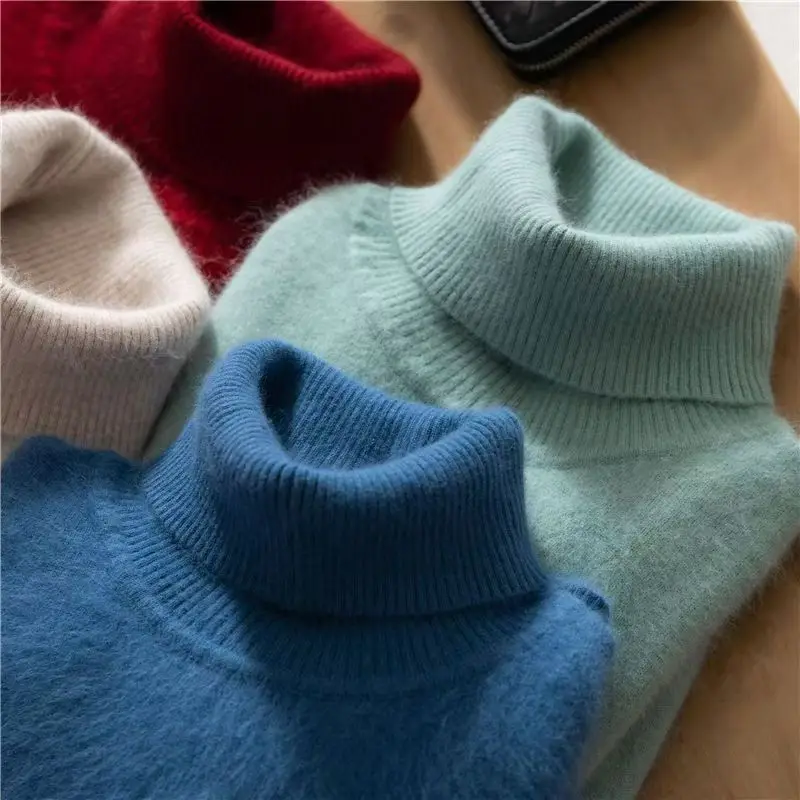Introduction: Why Proper Cashmere Storage Matters
Cashmere isn’t just any fabric—it’s a luxury that deserves special care. Made from the soft undercoat of cashmere goats, premium cashmere fibers measure under 16 microns in thickness, creating that unmistakable softness and remarkable warmth without the bulk. This exceptional quality is why cashmere garments often represent a significant investment in your wardrobe.
Unfortunately, improper storage can quickly damage even the finest cashmere. Without proper care, your beloved sweaters and accessories can fall victim to stretching, pilling, moth damage, or mildew. What might have been a cherished piece for decades can be ruined in just one off-season through neglect.
The financial benefit of proper storage cannot be overstated. Well-maintained cashmere can last over 10 years, dramatically reducing the cost-per-wear calculation. Beyond economics, there’s an emotional value to preserving these pieces—many cashmere garments become cherished wardrobe staples that carry memories and represent personal milestones.
The good news is that with the right knowledge, you can easily protect your investment. Proper storage cashmere techniques make all the difference between garments that deteriorate after a few seasons and those that remain luxurious for years to come.
Key principles for preserving your cashmere include:
– Always cleaning before storage
– Folding rather than hanging
– Using breathable storage containers
– Implementing effective moth prevention
– Maintaining appropriate temperature and humidity
Essential Pre-Storage Preparation
Thorough Cleaning Before Storage
Clean cashmere is happy cashmere, especially when being stored. Cleaning before storage isn’t just about freshness—it’s essential for longevity. Even invisible food particles or body oils left on your garments become an invitation to moths and other pests that can cause irreversible damage.
Follow these steps for proper pre-storage cleaning:
- Choose the right cleaning method: Hand washing is generally safest for cashmere care.
- Prepare a proper washing solution: Fill a clean basin with lukewarm water (never hot—keep it under 85°F/30°C) and add a small amount of pH-neutral, enzyme-free detergent specifically formulated for wool or cashmere.
- Gently submerge and soak: Turn the garment inside out, gently push it under the water, and allow it to soak for up to 10 minutes.
- Clean with care: Rather than rubbing or wringing, gently press the soapy water through the fabric.
- Rinse thoroughly: Drain the soapy water and refill with clean, cool water. Press water through the garment repeatedly until all soap residue is gone—usually requiring 2-3 rinse cycles.
- Remove excess water: Press (don’t wring) water out by placing the garment between clean towels.
If you must machine wash, use a front-loading washer on the cold water setting with a wool/delicate cycle. Always place items in a mesh laundry bag for protection.
Storing unwashed cashmere is one of the biggest mistakes you can make. Those invisible oils and particles not only attract moths but can also set in as stains over time, potentially becoming impossible to remove later. Learning proper cashmere washing techniques is an essential skill for maintaining your luxury garments.
Proper Drying Techniques for Storage Preparation
After washing, how you dry your cashmere is just as important as how you cleaned it. Follow these guidelines for optimal results:
- Always dry flat: Never hang wet cashmere as the weight of water will stretch the fibers
- Use a clean towel as a base: Lay a fresh, dry towel on a flat surface away from direct sunlight and heat sources
- Reshape while damp: Gently ease the garment back to its original dimensions while it’s still damp
- Flip to ensure even drying: After several hours, carefully turn the item over to ensure both sides dry completely
- Ensure 100% dryness: Even slightly damp cashmere can develop mildew in storage, so allow 12-24 hours for complete drying
- Perform a touch test: Before storing, check thicker areas like seams, collars, and cuffs to confirm they’re fully dry
Rushing this process or using shortcuts like hair dryers or heated drying racks can permanently damage the delicate fibers, causing shrinkage or a harsh feel. Patient drying is essential for maintaining that signature cashmere softness.
Understanding complete cashmere care practices will help you develop routines that become second nature, ensuring your garments receive the attention they deserve at each stage from wearing to storage.
The Art of Folding Cashmere
Why Folding Beats Hanging Every Time
When it comes to cashmere storage, the debate between hanging and folding isn’t really a debate at all. Folding is almost always the superior option, and the reasons are rooted in the physical properties of the fabric itself.
Hanging creates constant downward tension on cashmere fibers, which gradually stretches them out of shape. This is particularly problematic at stress points like shoulders, where the weight of the entire garment pulls downward, creating those distinctive “shoulder bumps” that ruin a sweater’s silhouette. The neckline also suffers, becoming distorted over time as gravity does its work.
In contrast, proper folding:
– Distributes weight evenly across the garment
– Maintains the original shape and dimensions
– Prevents stress on any single area of the fabric
– Preserves the elasticity of the fibers
The only exception might be extremely brief hanging periods (a few hours at most) when preparing to wear a garment. Even then, using a padded hanger with a wide, curved shape minimizes damage.
Luxury clothing experts and textile conservators uniformly recommend folding for knitted natural fibers like cashmere. Multiple studies have documented that hanging versus folding practices significantly impact garment longevity, with folded items maintaining their original dimensions and appearance far longer than their hung counterparts.

Step-by-Step Folding Techniques for Different Items
Folding cashmere correctly preserves its shape and prevents unnecessary creasing. Follow these techniques for different types of garments:
For Sweaters and Pullovers:
1. Place the sweater face-down on a clean, flat surface
2. Fold one sleeve back across the body of the sweater, keeping the fold line just below the shoulder
3. Repeat with the second sleeve, creating a rectangle shape
4. Fold the bottom half up to meet the shoulders
5. For longer storage, place acid-free tissue paper between each fold to prevent creasing
For Cardigans:
1. Button the cardigan completely to maintain shape
2. Lay face-down and follow the same sleeve-folding technique as sweaters
3. Ensure the button band lies flat before making the final fold
4. For bulkier cardigans, consider a gentler tri-fold rather than halving the garment
For Scarves and Accessories:
1. For scarves: Fold in thirds lengthwise, then fold in half or thirds again depending on length
2. For small accessories: Create simple square folds, avoiding sharp creases
3. Consider rolling delicate scarves instead of folding to minimize crease lines
For Embellished Items:
1. Identify decorative elements (beading, sequins, etc.)
2. Place extra tissue around embellishments to protect both the decorations and the surrounding fabric
3. Avoid folding directly on embellished areas
Using acid-free tissue between layers adds an extra level of protection by:
– Preventing direct contact between different parts of the garment
– Absorbing any residual moisture
– Creating a pH-neutral barrier that won’t damage fibers
– Adding slight cushioning to prevent sharp fold lines
Bulkier knits require fewer folds to prevent excessive creasing—sometimes a simple halving is sufficient. The goal is always to minimize stress points while creating a compact shape suitable for your storage method.
Optimal Storage Environments and Materials
Creating the Ideal Storage Environment
The environment where you store your cashmere dramatically affects its condition over time. Creating optimal conditions doesn’t require specialized equipment—just thoughtful placement and awareness of a few key factors.
Your cashmere thrives in these conditions:
– Temperature: 60-75°F (15-24°C), avoiding extreme fluctuations
– Humidity: 45-55%, neither too dry nor too damp
– Light exposure: Minimal to none, especially avoiding direct sunlight
– Air circulation: Some air flow prevents mustiness while discouraging pests
The ideal home locations for cashmere storage include:
– Interior closets (not against exterior walls)
– Bedroom dresser drawers (if not overcrowded)
– Dedicated storage chests in temperature-controlled rooms
Conversely, certain locations pose significant risks to your cashmere:
– Attics (temperature extremes and potential pest issues)
– Basements (excessive humidity and mildew risk)
– Garages or outdoor storage units (uncontrolled environment)
– Closets near bathrooms (humidity fluctuations)
Scientific evidence shows that natural fibers like cashmere respond dramatically to their environment. In high humidity, fibers can absorb moisture, potentially leading to mildew. In very dry conditions, fibers become brittle and lose elasticity. Temperature fluctuations cause repeated expansion and contraction that weakens the fabric over time.
Understanding proper cashmere storage environments helps you make informed decisions about where to keep your garments, whether for a season or just between wearings.
Selecting the Right Storage Containers
The container you choose for cashmere storage plays a crucial role in maintaining fiber integrity and preventing damage. Here’s a comparison of the most common options:
| Storage Option | Benefits | Considerations | Best For |
|---|---|---|---|
| Cotton Garment Bags | Breathable, prevents dust, allows humidity balance | Less protection against pests | Shorter-term storage, hanging items |
| Linen Storage Bags | Excellent breathability, natural material, aesthetic appeal | May require additional pest deterrents | High-value items, visible storage |
| Acid-Free Boxes | Stackable, excellent dust protection, stable environment | Must be truly acid-free, less breathable than fabric | Seasonal storage, limited space situations |
| Cedar Chests/Elements | Natural pest deterrent, pleasant aroma, humidity regulation | Requires occasional sanding to refresh properties | Long-term storage, pest-prone areas |
Materials to absolutely avoid include:
– Plastic bags or bins (trap moisture, promote mildew)
– Cardboard boxes (may contain acids that transfer to fibers)
– Wire hangers (create distortion and stretching)
– Colored tissue paper (dyes may transfer to light-colored cashmere)
When selecting garment bags, choose ones that are:
– Large enough to avoid compression (at least 24” wide for sweaters)
– Made from unbleached, undyed natural fabrics
– Equipped with secure but non-metal closures
– Clearly labeled for easy identification
For box storage, ensure:
– Boxes are true acid-free quality (not just regular cardboard)
– Size accommodates garments without crowding or excessive folding
– Items are layered with acid-free tissue between each piece
Our collection of cashmere sweaters deserves the very best protection to maintain their exceptional quality and softness season after season.
Comprehensive Pest Prevention Strategies
Understanding and Deterring Moths
The relationship between moths and cashmere is unfortunately a strong one. Moths—specifically clothes moths (Tineola bisselliella)—are naturally drawn to protein fibers like cashmere, wool, and silk. These pests target cashmere for two primary reasons: the keratin protein in the fibers provides food for their larvae, and the soft texture offers an ideal environment for egg-laying.
Moth activity typically peaks during warm, humid periods, particularly spring and early summer, though indoor heating can create year-round conditions for infestation. The earliest signs of moths include:
- Small, irregular holes in garments
- Silky tubes or webbing on fabric surfaces
- Fine, sandy debris near stored items
- Adult moths (small, golden, and wingless) in storage areas
Effective natural deterrents include:
– Cedar blocks, hangers, or balls (refresh every 3-6 months by light sanding)
– Lavender sachets (replace every 2-3 months as scent fades)
– Rosemary, thyme, or clove sachets (slightly longer-lasting than lavender)
Contrary to popular belief, cedar doesn’t kill moths—it repels them when fresh. Similarly, lavender deters but doesn’t eliminate existing infestations. Understanding these limitations helps create more effective moth prevention strategies for your valuable cashmere collection.
The most effective prevention remains vigilant cleaning before storage and regular inspection of stored items, particularly along seams and folds where moths prefer to deposit eggs. Combining methods—clean garments, proper containers, and natural repellents—creates a comprehensive defense system against these persistent pests.

Advanced Protection Methods
For those seeking maximum protection against moths and other cashmere threats, these advanced methods offer additional security:
Freezer Method Protocol:
1. Place completely clean, dry garment in an airtight plastic bag, removing as much air as possible
2. Place in freezer at 0°F (-18°C) or colder for a minimum of 72 hours
3. Remove and allow to return to room temperature while still sealed (prevents condensation)
4. Remove from bag and store as recommended
5. Repeat this process if you suspect new infestation
The freezer method works because extreme cold kills moths at all life stages, including eggs and larvae that may be invisible to the naked eye. However, it must be cold enough and for long enough—a standard freezer often requires the full 72 hours or longer.
Physical Barrier Systems:
1. Airtight containers with locking lids provide excellent protection when properly sized
2. Vacuum storage bags can work for short-term storage but risk permanent creasing
3. Specialized zipper bags with pest-resistant materials offer balanced protection
For maximum effectiveness, implement a regular inspection schedule:
– Monthly during first season of storage (check for early signs of problems)
– Every 3 months during long-term storage
– Immediately upon noticing any moths in your living space
– Before returning items to regular rotation
If you discover an infestation:
1. Isolate affected items immediately
2. Clean all potentially affected garments following specific pest removal protocols
3. Clean the storage area thoroughly with appropriate products
4. Consider professional intervention for valuable pieces
The risk of cross-contamination is serious—one infested item can quickly spread moths to your entire collection. Never return a potentially infested garment to storage without thorough treatment.
Seasonal vs. Short-Term Storage Strategies
The approach to cashmere storage should vary depending on how long the items will be put away. Different timeframes require different levels of preparation and protection:
| Storage Duration | Cleaning Requirements | Container Recommendations | Pest Prevention | Environment Control |
|---|---|---|---|---|
| Daily/Weekly (between wears) | Spot cleaning, airing out | Drawer with tissue, open shelving | Basic cedar | Standard closet/drawer |
| Seasonal (3-6 months) | Full washing, complete drying | Breathable bags, acid-free boxes | Cedar + herbal sachets | Humidity monitoring |
| Long-term (6+ months) | Professional cleaning recommended | Multiple protection layers, sealed containers | Complete system, freezer method | Strict climate control |
For daily or weekly storage between wearings, cashmere can simply be aired out for 24 hours, gently brushed, and placed in a drawer with basic cedar protection. This level of care is sufficient for items in regular rotation.
Seasonal storage requires more thorough preparation. As seasons change, cashmere preservation strategies become more intensive—complete cleaning, careful folding with tissue, and placement in breathable containers with active pest deterrents.
For long-term storage (such as during a move, extended travel, or for special occasion items), the most comprehensive approach is needed. Consider professional cleaning, multiple layers of protection, and periodic checking if possible.
When transitioning cashmere between storage types, always allow items to air out for 24-48 hours before wearing. This helps remove any storage odors and revitalizes the fibers.
Special considerations apply for secondary residences or vacation homes. In these cases, climate control may be inconsistent, making sealed containers with moisture-absorbing products particularly important. Additionally, scheduled checks by property managers or services can help catch problems before they become serious.
Our cashmere cardigan collection features pieces designed to transition beautifully between seasons with proper care.
Cashmere Wrap Sweaters, Women's Cashmere Pullovers
$75.89 Select options This product has multiple variants. The options may be chosen on the product pageCashmere Cable Knit Sweaters, Women's Cashmere Pullovers
Price range: $111.82 through $112.93 Select options This product has multiple variants. The options may be chosen on the product pageCropped Cashmere Sweaters, Women's Cashmere Pullovers
$155.77 Select options This product has multiple variants. The options may be chosen on the product page- Price range: $102.02 through $109.37 Select options This product has multiple variants. The options may be chosen on the product page
Oversized Cashmere Sweaters, Plus Size Cashmere Sweaters, Women's V-Neck Cashmere Sweaters
$136.87 Select options This product has multiple variants. The options may be chosen on the product page- Price range: $108.11 through $130.03 Select options This product has multiple variants. The options may be chosen on the product page
Common Storage Mistakes to Avoid
Even with good intentions, cashmere care can go wrong. Avoid these critical errors to protect your investment:
Storing without cleaning: Even invisible body oils and food particles attract pests and can set as stains during storage. Always clean before storing.
Using unbreathable containers: Plastic bags and airtight containers trap moisture, leading to mildew and fiber damage. Always choose breathable options unless using the freezer method.
Ignoring humidity levels: Too much humidity causes mildew; too little makes fibers brittle. Aim for 45-55% humidity and consider humidity monitors for valuable collections.
Overlooking pest prevention: Moths can destroy an entire garment in one season. Implement comprehensive prevention rather than addressing infestations after damage occurs.
Overstuffing storage areas: Compression damages fibers and prevents air circulation. Allow space around each garment—quality storage requires adequate space.
Using chemical mothballs: These contain naphthalene or paradichlorobenzene, both harmful to humans and damaging to natural fibers over time. Natural alternatives are both safer and gentler on your cashmere.
Exposing to light: Long-term exposure to light, especially sunlight, fades colors and weakens fibers. Choose dark storage locations for extended periods.
The timeline for damage varies—moth damage can begin within weeks, while compression damage might take months to become noticeable. However, storing dirty cashmere can cause permanent staining in as little as one season.
Following proper cashmere storage guidelines helps avoid these costly mistakes and ensures your garments remain beautiful for years.
Explore our cashmere turtlenecks collection for timeless pieces worth protecting with proper storage techniques.
Maintenance and Revival of Stored Cashmere
When it’s time to bring your treasured cashmere out of storage, proper revival techniques ensure it’s ready to wear and looking its best:
Pre-wear procedures after storage:
Air out thoroughly: Remove from storage and allow to hang freely (on a padded hanger) or lay flat in a well-ventilated room for 24-48 hours.
Gently refresh: For items with no visible issues, a simple steaming from 6-8 inches away can revitalize fibers. Never apply direct iron heat to cashmere.
Eliminate static: Lightly mist distilled water from a spray bottle held 12 inches away, or briefly hang in a steamy bathroom (away from water).
For minor issues:
Light creasing: Lay flat on a towel, lightly mist with distilled water, and gently reshape with your hands.
Minor pilling: Use a specialized cashmere comb or small fabric shaver, working in one direction with minimal pressure.
Slight musty smell: Air outside in shade for several hours, then refresh with a mixture of water and a drop of mild detergent misted lightly and allowed to fully dry.

Estate Cloth’s premium cashmere responds particularly well to gentle steaming, as the high-quality fibers quickly recover their natural loft and softness after proper storage.
For more significant concerns like persistent odors or visible damage, professional intervention may be your safest option to preserve the integrity of fine cashmere pieces.
Browse our women’s cashmere pullover collection to discover pieces designed for both immediate enjoyment and long-term investment value.
When to Consult Professional Care Services
While home care suffices for most cashmere maintenance, certain situations warrant professional attention. Recognizing when to seek expert help can save treasured pieces from permanent damage.
Consider professional services when facing:
- Significant moth damage with visible holes or widespread larvae activity
- Persistent stains that haven’t responded to gentle home cleaning
- Deep-set odors that remain after airing and refreshing attempts
- Vintage or heirloom cashmere pieces requiring specialized restoration
- Structural damage like unraveling seams or stretched sections
- Water damage from improper storage or household accidents
When selecting professional services, look for specialists who:
– Have specific experience with luxury natural fibers
– Offer hand-cleaning options rather than standard dry cleaning
– Can provide references or examples of previous cashmere restoration
– Clearly explain their process and expected outcomes
– Understand the specific needs of high-grade cashmere
Professional restoration generally costs between $30-100 per item depending on the service required—significantly less than replacing premium cashmere pieces. When communicating with specialists, be prepared to share details about the garment’s age, previous cleaning history, and specific concerns.
While prevention through proper cashmere pilling prevention and storage is always preferable, professional intervention can often rescue even seriously compromised garments when home methods would be insufficient.
Our men’s cashmere pullover collection represents an investment in quality that deserves professional care when necessary.







